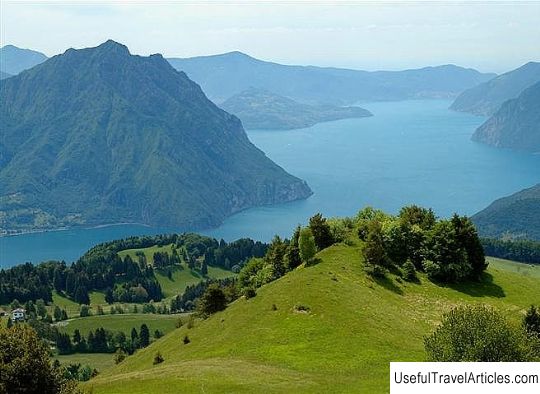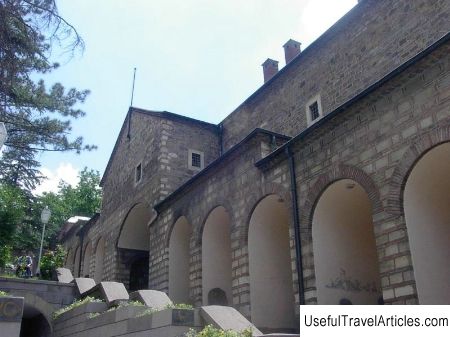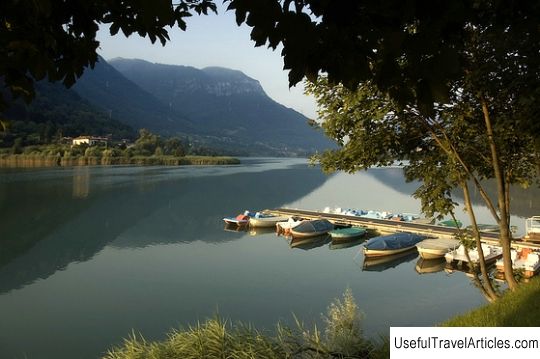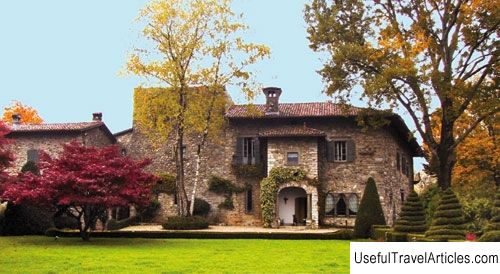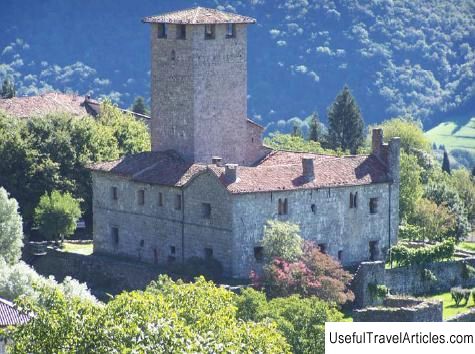Valcalepio description and photos - Italy: Bergamo
Rating: 7,5/10 (100 votes) 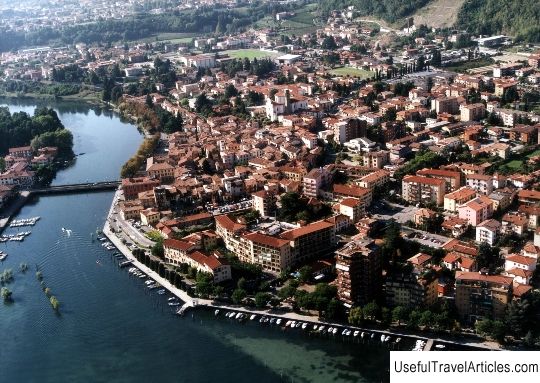
Valcalepio description and photos - Italy: Bergamo. Detailed information about the attraction. Description, photographs and a map showing the nearest significant objects. The title in English is Valcalepio. Photo and descriptionValcalepio is a hilly valley that lies between the rivers Kerio and Oglio in the province of Bergamo. From the point of view of landscape and cultural heritage, it is of undoubted interest for tourists. According to legend, the name of the valley - Kalepio - comes from two Greek words "kalos" and "epias", which together mean "good land". And this land is really good - it is distinguished by fertility and a temperate climate, which ensures the proximity of Lake Iseo. Both of these conditions are ideal for growing grapes and producing excellent wine, which made this, in general, a small valley famous all over the world. Valkalepio is also interesting from the point of view of archaeologists - numerous significant finds were made on its territory, including traces of several well-preserved ancient Roman settlements. This land was the scene of many battles, because here the border interests of the provinces of Bergamo and Brescia converged. A peace treaty between them was signed only in 1192. And later, dramatic battles between Venice and Milan were played out in the valley - it was here that the great captains Colleone and Gattamelata met in battles. Today, Valcalepio thrives on the presence of several small businesses in the valley. For example, there is an unusual factory for the production of ... buttons. And, of course, the valley is famous for its wineries, which produce DOC wines, including the very valuable Valcalepio Moscato Passito DOC, a real symbol of Bergama winemaking. For a detailed acquaintance with Valcalepio, it is worth going on a walking or cycling tour, which will take about 2 hours. The route starts from Castel de Conti in the village of Castelli Calepio and follows the road between Sarnico and Bergamo. In Castelli Calepio, in addition to the aforementioned castle, it is also worth visiting the small Palazzetto Carolingio, the Church of San Lorenzo and the restored medieval village. Then, heading towards Lake Iseo, tourists visit Credaro with its Romanesque church of San Fermo and San Giorgio and the castles of Montague and Trebecco, and from there enter the town of Villongo. Particularly noteworthy here is the Sant Alessandro quarter with the Church of the Holy Trinity, erected in the 18th century and decorated with a statue of the Madonna, and the Romanesque church of Sant Alessandro, painted with frescoes. Further, the route passes through the village of Castion, where priceless frescoes of the 11th century have been preserved in the small church of Santi Nazario and Rocco. The town of Sarnico is considered one of the most beautiful on Lake Iseo and one of the most famous. It is an important commercial and tourist center with traces of medieval urban planning - portals, arches, narrow streets, old towers and the 15th century church of San Paolo. The Parish Church of Sarnico, dedicated to Saint Martin of Tours, was built in the 18th century. Here you can also admire two beautiful Fakkanoni villas, built between 1906 and 1912. Returning along the coast of Iseo in Villongo, the route continues to the picturesque village of Fosio with its dam, old houses and a 17th century windmill. Then tourists go to the town of Adrara San Martino - it is notable for traces of prehistoric and ancient Roman settlements, a medieval castle and the parish church of San Martino of the 15th century. Further, the route passes through the village of Foresto Sparso, the town of Gandosso and the picturesque hilly area covered with vineyards, and ends in Grumello del Monte, a small historical settlement with a typical medieval layout, famous for its ancient castle-fortress of Gonzaga. Also worth a visit are San Pantaleone with its old rural dwellings, the Madonna del Rosario church and the Pecori Giraldi Mayoni d'Itignano villa.         Topic: Valcalepio description and photos - Italy: Bergamo. |
